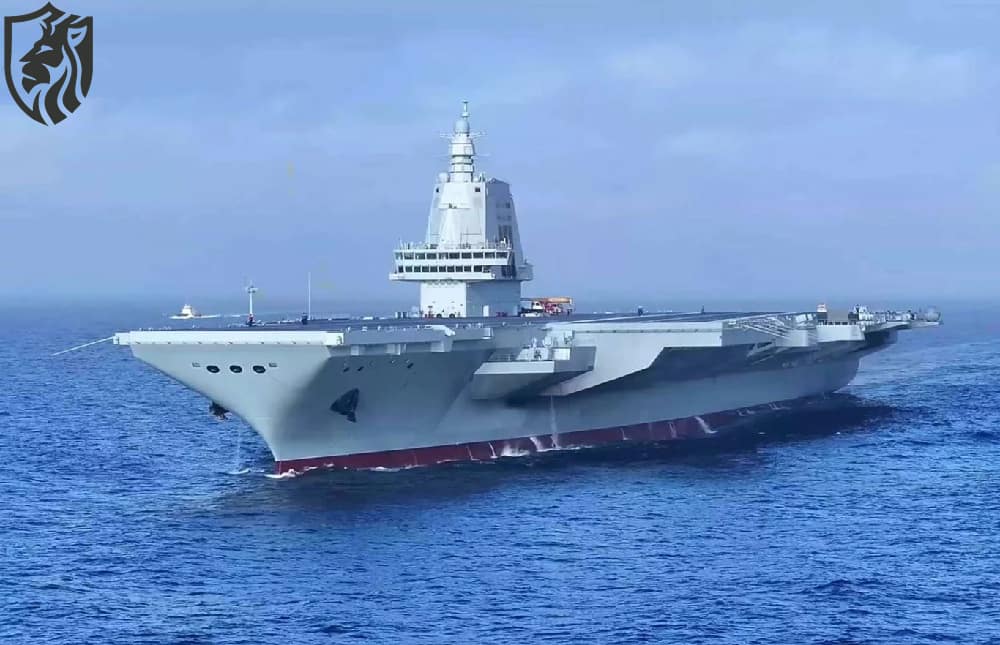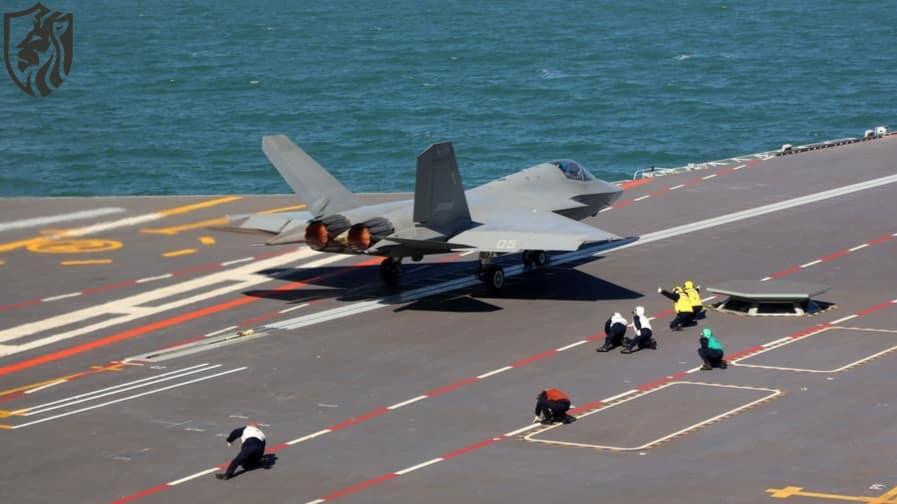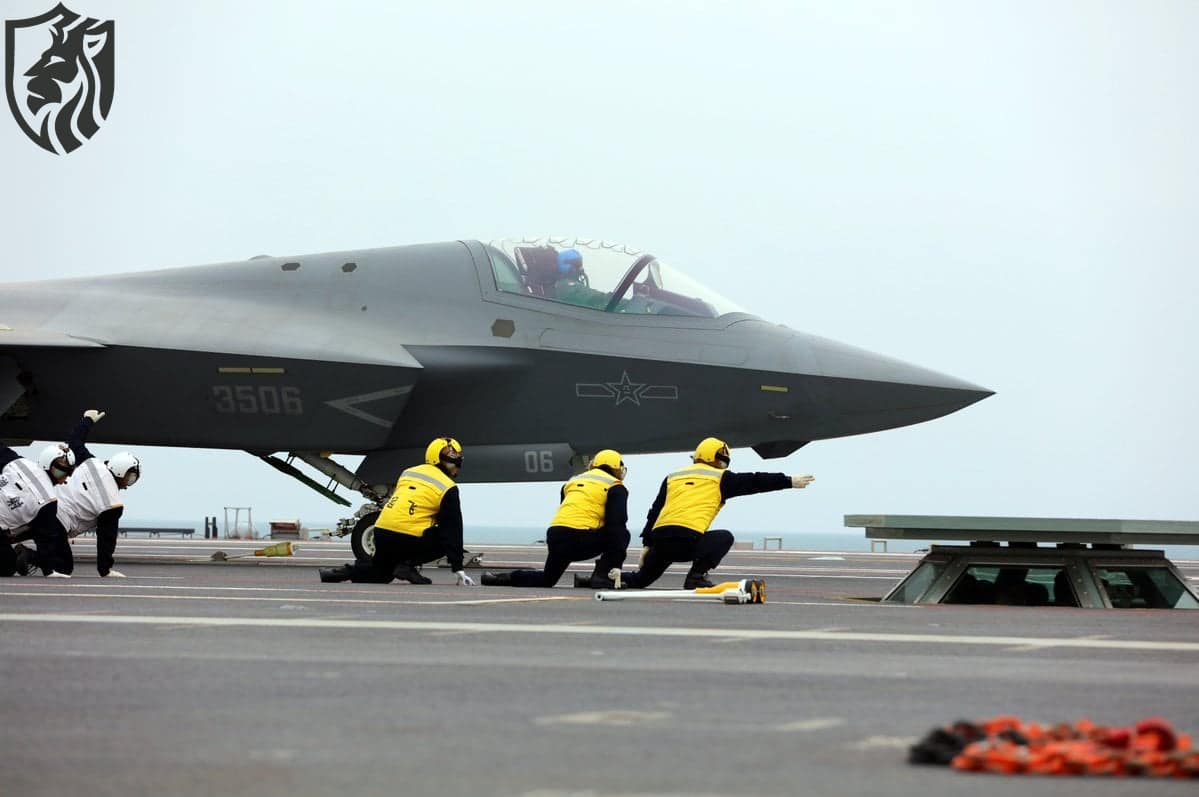
Fujian aircraft carrier — China’s new edge at sea
Why the Fujian matters now
China’s Fujian aircraft carrier signals a decisive shift in carrier warfare. The 80,000-ton vessel uses electromagnetic catapults (EMALS) to launch heavier aircraft at higher tempos. Consequently, it can project power farther and faster than China’s earlier ski-jump decks.
From ski-jump to EMALS: a generational leap
The Fujian aircraft carrier has launched and recovered the J-35 stealth fighter, J-15T multirole jet, and KJ-600 early warning aircraft during recent tests. EMALS enables fully armed sorties and fixed-wing AEW operations, which ski-ramp carriers struggle to support. Therefore, Fujian closes a core capability gap with US and French CATOBAR carriers.
Air wing and deck cycle
The Fujian aircraft carrier is designed for an air wing of roughly 50–60 aircraft. That inventory reduces the classic offence–defence dilemma on smaller decks. Liaoning and Shandong carry around 24 and 32 fighters, respectively, which forces harder trade-offs between strike packages and combat air patrols.

Commissioning trajectory and basing
Launched in 2022, the Fujian aircraft carrier has completed multiple sea trials, including a Taiwan Strait transit en route to the South China Sea for training and evaluation. Once commissioned, analysts expect basing at Sanya, Hainan, which places the carrier closer to the First Island Chain and Western Pacific.
Power projection and constraints
The Fujian aircraft carrier expands China’s options for regional coercion, signalling, and crisis response. However, it remains conventionally powered, which limits endurance compared with nuclear-powered peers. Moreover, China’s limited network of overseas facilities constrains global reach, although a mooted nuclear Type 004 design aims to mitigate that.
US comparison: capability and experience
The Fujian aircraft carrier narrows the technical gap, yet the United States still fields 11 nuclear supercarriers with larger air wings—up to ~90 aircraft on USS Gerald R. Ford. Just as important, the US Navy brings a century of carrier design, training, and combat experience. China, by contrast, continues to validate its concepts at sea and must build flight-deck proficiency over time.
Likely roles in a Taiwan contingency
In a major crisis, the Fujian aircraft carrier would probably not seek a Midway-style blue-water duel. Instead, PLAN doctrine suggests a push for localised air superiority under a “missile umbrella” from the PLA Rocket Force. Systems such as DF-21D and DF-26B anti-ship ballistic missiles—and potentially DF-26D and massed drones—aim to hold US and allied ships at risk while Fujian’s air wing supports maritime strike and air defence.

South China Sea and Indian Ocean signalling
Beyond Taiwan, the Fujian aircraft carrier strengthens China’s gunboat diplomacy in the South China Sea. It can shadow allied exercises, cover coast-guard operations, and deter regional claimants that lack carriers. Furthermore, Beijing’s Indian Ocean presence—from Djibouti to Gwadar and Hambantota—offers logistics for sustained deployments that protect sea-lanes and ease the Malacca Dilemma.
What Fujian changes—and what it doesn’t
The Fujian aircraft carrier changes three things. First, EMALS lifts sortie rate and aircraft mass, enabling stealth fighters and true fixed-wing AEW. Second, a larger deck group improves sustained operations and layered defence. Third, a third carrier allows a rotation of training, maintenance, and forward presence as China grows the fleet.
However, three constraints remain. The Fujian aircraft carrier still relies on conventional fuel, limiting unrefuelled endurance. Next, combat learning lags until the PLAN operates under high tempo, high attrition conditions. Finally, the US retains deeper logistics, ISR, and battle damage repair capacity, which matter in prolonged conflict.
Outlook to 2030 and beyond
By 2030, the Fujian aircraft carrier could anchor a three-carrier model: one deployed, one in work-ups, one in maintenance. If a nuclear Type 004 enters service, China gains endurance and higher electrical margins for future systems—directed energy, advanced radars, and unmanned air wing integration. Even so, decisive advantage will depend on pilot training hours, deck crew proficiency, resilient C2, and protection against long-range precision strike.






